“You are what you eat.”
 Be aware that pets who switch to a fresh, healthy diet may show signs that seem unhealthy at first. Diarrhea, worms, excretions of the skin, and initial lethargy are indications that the new healthy diet is causing the body to discharge toxic materials. Sometimes things must get worse before they get better.
Be aware that pets who switch to a fresh, healthy diet may show signs that seem unhealthy at first. Diarrhea, worms, excretions of the skin, and initial lethargy are indications that the new healthy diet is causing the body to discharge toxic materials. Sometimes things must get worse before they get better.
Food ought to be made from fresh ingredients. Optimally, they should be organic when possible, but if cost prohibits organic compliance, a fresh non-organic diet is better than a bagged or canned diet.
Meat should be raw and free of antibiotics, synthetic hormones, and drugs. Dogs and cats in the wild evolved on raw foods, and those raw foods contain necessary enzymes that cooking destroys. Heat also destroys certain vitamins, amino acids, and trace elements; it denatures protein, and alters the molecular structure of essential fatty acids.
Protein sources include chicken, turkey, beef, lamb, and egg yolks. Fish, pork, and rabbit may also be used, but they ought to be lightly steamed. Dairy products, legumes, and grains are also sources of protein, however they are not recommended as main protein staples.
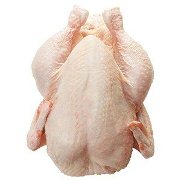 Dogs need a certain amount of fat in their diet, but not just any old fat. There’s a big difference between fresh essential fatty acids versus the crispy fat rind off of your steak. Also, rancid fats, which are found in many commercial pet foods, destroy certain nutrients, such as vitamin E. Avoid weight loss pet foods because they lack essential fatty acids that are, well, essential. If you’re worried about weight loss, reduce portion size and try to exercise your pet more. But feed them good, healthy food. Healthy in the dog world includes fat. Too much fat, on the other hand, depletes the nutritional intake of other nutrients, such as protein. As in life, what’s best is a balance.
Dogs need a certain amount of fat in their diet, but not just any old fat. There’s a big difference between fresh essential fatty acids versus the crispy fat rind off of your steak. Also, rancid fats, which are found in many commercial pet foods, destroy certain nutrients, such as vitamin E. Avoid weight loss pet foods because they lack essential fatty acids that are, well, essential. If you’re worried about weight loss, reduce portion size and try to exercise your pet more. But feed them good, healthy food. Healthy in the dog world includes fat. Too much fat, on the other hand, depletes the nutritional intake of other nutrients, such as protein. As in life, what’s best is a balance.
Raw bones provide essential nutrients. Many people are afraid to feed their cats and dogs bones because of what we’ve been told, but the advice ought to be “don’t feed cooked bones.” Heat denatures the composition of the bones, making them brittle and prone to splintering. 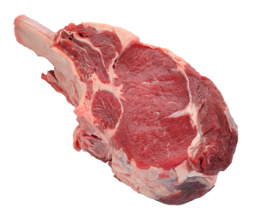 Raw bones, however, provide the optimal calcium/phosphorus balance, which your pet needs for health maintenance, disease prevention, and all around good health. Feeding just calcium is not good, nor is feeding just phosphorous. Dogs and cats need the proper ratio from bones because this is how their bodies evolved.
Raw bones, however, provide the optimal calcium/phosphorus balance, which your pet needs for health maintenance, disease prevention, and all around good health. Feeding just calcium is not good, nor is feeding just phosphorous. Dogs and cats need the proper ratio from bones because this is how their bodies evolved.
Raw bones also provide fresh cartilage for healthy joints, plus they keep the teeth and gums healthy. As an added bonus, they also give your pet mental stimulation! Raw bones ought to be given about every three to five days.
You can distinguish a bone-chewing pet by its white teeth. One of the myths about kibble is that it cleans teeth, but the opposite is true. Kibble-eaters need regular dental work, often with dangerous anesthetics. See the dental section for more information.
If your dog is an aggressive chewer, or you have an older dog or cat who isn’t accustomed to bones, be careful of the type of bone you give them. Marrow bones are hard, and very aggressive chewers could fracture a tooth. Shoulder, neck or knuckle bones may be a better choice. And if older pets have aged on bagged and canned foods, their teeth may not have developed in a strong and healthy way. Dogs and cats, on the other hand, who have grown up on bones have no problems with many types of raw, fresh bones.
Normal chewers do fine with marrow bones, although some people warn against feeding too much marrow. Marrow, though, is full of nutrients, and most dogs have no problem with it. One of the warnings against marrow is that it may have bacteria in it. Yes, it may. But a dog’s system is designed to deal with those bacteria. You’ve probably seen dogs that 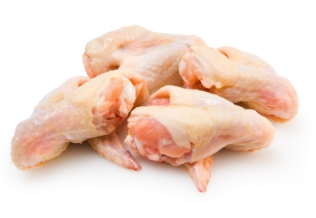 bury their bones in dirt, and then get them a week later. This is a good example of why it’s important to be aware of our tendency to humanize our pets. Dogs and cats aren’t human. Their systems are different than ours. Also, remember that any change to the diet can cause temporary upsets.
bury their bones in dirt, and then get them a week later. This is a good example of why it’s important to be aware of our tendency to humanize our pets. Dogs and cats aren’t human. Their systems are different than ours. Also, remember that any change to the diet can cause temporary upsets.
Another common myth is that chicken bones are a big “no-no”. People think it’s easier to choke on them. Again, cooked bones of all kinds are a “no-no”. But raw chicken and turkey bones are actually edible. Some smart trainers actually use raw chicken wings as training treats. Because these are not weight-bearing birds, their non-marrow bones are soft, hollow, and pliable … and a great source of that necessary calcium/phosphorus mix mentioned earlier, and trace minerals. This is why we grind up fresh, natural, raw bones into our pet foods.
Pets who are not accustomed to eating bones ought to start out with small quantities. Remove portions that are left uneaten, and keep an eye on your dog or cat when they are eating bones. Whether you choose to feed raw bones or not, it’s a good idea to familiarize yourself with the Heimlich maneuver both for people and pets.
Carbohydrates are a source of debate in the pet nutrition field. Many dogs have developed intolerances or allergies to certain grains – corn and wheat, in particular – because of the high percentages or poor quality in commercial  pet food. However, most dogs do fine with a suitable ratio of quality grain in their diet.
pet food. However, most dogs do fine with a suitable ratio of quality grain in their diet.
The argument against grain is solid. In accordance with the fact that wild dogs’ bodies evolved on a raw meat diet, it’s claimed that grains are not a natural part of this ancestral food. “Grain-free” is the latest trend in chic pet food.
However, small amounts of grains that had been eaten by prey made their way into our dog and cat’s ancestral stomachs when the wild dogs and cats ate the prey. This grain was already semi-digested, which is why grains need to be cooked and mushed to prepare them for the fast trip through our pets’ shorter digestive tracts.
Besides adding nutrients, carbohydrates bring the cost of feeding down. If high costs prohibit a pet owner from switching to fresh foods, it’s much better to feed a natural diet supplemented with quality grains than to feed a cheap bagged or canned food. The cost in veterinary bill savings should also be taken into account when weighing out costs. If dogs are prone to food allergies, try a diet with rice or oatmeal as the grain, or a grain-free diet. Don’t, however, feed only meat. Doing this would cause deficiencies.
Fruits and vegetables are also a good source of carbohydrates. This is also an area of contention. Some claim that fruits and vegetables are not part of a dog and cat’s natural diet. Some say that wild dogs don’t eat fruit. This isn’t true, though. Dogs might not have gorged on cantaloupe, but they certainly weren’t averse to munching on wild blueberries and the like. Cats, not so much. Cats are true carnivores. Dogs are more omnivorous by nature. Your dog can’t process most fruits and vegetables without some help, though. These foods need to be either minced finely or run through a food processor. Digestive enzymes help with absorption.
Food bowls should be stainless steel, glass, or ceramic with no toxic paints or shellacs, and they ought to be cleaned with soap and hot water, or in a dishwasher, after each meal.
 People often overlook the importance of water quality for their pets. Water bowls ought to be washed regularly. Filtered water is best. Pets should have unlimited access to water, so make sure their bowls are full and the toilet lids are kept down.
People often overlook the importance of water quality for their pets. Water bowls ought to be washed regularly. Filtered water is best. Pets should have unlimited access to water, so make sure their bowls are full and the toilet lids are kept down.
Vitamins and minerals are an important part of nutrition not just for people, but for pets, too. If the body is deficient in a necessary nutrient, something will go awry. So vitamins and minerals are not only used for prevention of disease, but also for treatment.
One of the most important factors to consider when supplementing our pets’ diet is absorption. Vitamins, minerals, and other supplements will do your dog or cat’s body no good if they go in one end and out the other, undigested. Even in humans, absorption is an issue. Some people have reported seeing whole multivitamins in their stool. With pets, absorption is even trickier because their gastro-intestinal systems have been evolutionarily engineered to process raw meats. This means a shorter intestinal tract, among other things.
We’re still not sure which form of mineral supplementation is best, but the studies done on citrated minerals seem to be the most convincing. You’ve probably noticed that minerals and other nutrients often have two names – calcium carbonate, calcium citrate, ferrous oxide, ferrous sulfate, et cetera.  All supplements have issues with absorption, but minerals bound to citrate have been shown to have acceptable and predictable levels of absorption. So, if you buy a citrated product that has been tested for content, you have some assurance of digestibility and reliable assurance that the supplement doesn’t contain unwanted ingredients. Still, by far, the best way to give your pet supplements is to provide them from natural sources in the diet. For a list of some of the major food sources of certain vitamins and minerals, click on this website link. Before feeding your pet a new fruit or vegetable, check the Forbidden Foods list.
All supplements have issues with absorption, but minerals bound to citrate have been shown to have acceptable and predictable levels of absorption. So, if you buy a citrated product that has been tested for content, you have some assurance of digestibility and reliable assurance that the supplement doesn’t contain unwanted ingredients. Still, by far, the best way to give your pet supplements is to provide them from natural sources in the diet. For a list of some of the major food sources of certain vitamins and minerals, click on this website link. Before feeding your pet a new fruit or vegetable, check the Forbidden Foods list.
In general, cats should only be fed once a day. Dogs, on the other hand, may be fed multiple times per day. Whatever the frequency, if you have a finicky eater, regularly scheduled mealtimes and rituals are helpful. One woman, for example, continued to use a can opener at her little dog’s mealtime because he got excited about the sound. Most dogs, however, don’t need such stimulation. Cats are a different story.
Dogs
A dog’s diet ought to be:

Cats
 While dogs are omnivores, cats really are true carnivores. As such, their systems developed over millions of years on a diet of wild prey and not much else. Even though their bodies evolved this way, there are considerations. One of the feline evolutionary developments, for example, is a shorter intestinal tract that was designed to eliminate meat wastes expediently. But the cats of old lived in environments that were free of the toxicities our pets are exposed to, they usually had lengthy fasts between meals, and they got a great deal of exercise. Because of this lifestyle, their bodies were able to eliminate meat wastes expediently.
While dogs are omnivores, cats really are true carnivores. As such, their systems developed over millions of years on a diet of wild prey and not much else. Even though their bodies evolved this way, there are considerations. One of the feline evolutionary developments, for example, is a shorter intestinal tract that was designed to eliminate meat wastes expediently. But the cats of old lived in environments that were free of the toxicities our pets are exposed to, they usually had lengthy fasts between meals, and they got a great deal of exercise. Because of this lifestyle, their bodies were able to eliminate meat wastes expediently.
Even the best meat sources now contain substances that weren’t in the fresh prey that the ancestors ate. So the ancestral diet isn’t really possible unless you throw a bunch of rodents in your house, and that’s not recommended. Housecats nowadays do well on diets that combine raw meats with other carbohydrate sources. However, they do need a higher percentage of protein than dogs, and they should never be put on a vegetarian diet.
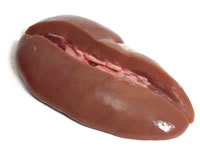 Many animals are capable of converting beta-carotene from vegetables into vitamin A, but cats can’t do this; they need an animal source containing vitamin A. They also need an amino acid called taurine. These are just a couple of needs that were discovered when cats developed illnesses from commercial pet foods. Most likely, there are many more that haven’t been discovered yet.
Many animals are capable of converting beta-carotene from vegetables into vitamin A, but cats can’t do this; they need an animal source containing vitamin A. They also need an amino acid called taurine. These are just a couple of needs that were discovered when cats developed illnesses from commercial pet foods. Most likely, there are many more that haven’t been discovered yet.
You’ll find differing opinions on the meat/fat/carbohydrate ratio that’s best for cats, but the consensus of experts seems to lean toward:
- 30-75% Protein
- 25-45% Fat
- 10-35% Carbohydrate
Forbidden Foods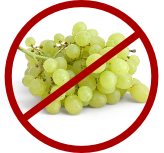
Dogs and cats can’t have chocolate, grapes, or raisins. Some also say onions, macadamia nuts, tomatoes, and avocado aren’t good for your pet. Apples are good, but not apple seeds. Immature parts of potatoes can also be toxic, such as the shoots and sprouts that grow off of the potato.
There’s debate about whether our pets ought to have garlic or not. Many naturopathic veterinarians believe garlic has beneficial medicinal properties, and they advocate its use for certain conditions. Others say dogs and cats shouldn’t have garlic. Research the issue and decide for yourself.